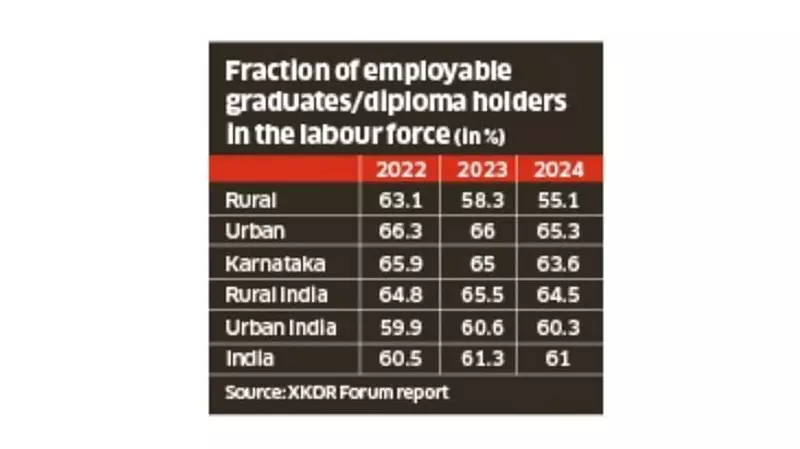
A recent study has revealed a concerning trend in Karnataka's employment landscape, showing a decline in labour force participation following the implementation of the Yuva Nidhi scheme. The findings present a complex picture of the state's workforce dynamics.
Mixed Results Across Districts
The research indicates varying patterns across different regions of Karnataka. While some districts experienced positive growth, the overall trend points toward a reduction in labour force engagement. The study specifically highlights that labour force participation increased in Bengaluru Urban, Bengaluru Rural, Chikballapur, Kolar, and Ramangara districts from 63.4% in 2022 to 67.6% in 2024.
Regional Variations in Employment Trends
The data shows significant regional disparities in how the Yuva Nidhi scheme has affected workforce participation. The five districts that demonstrated improvement represent important economic hubs and surrounding areas, suggesting that urban and peri-urban regions might be responding differently to the scheme compared to rural areas.
The study, reported by Bharath Joshi and Rashmi Belur, was published on November 10, 2025, providing recent insights into the scheme's impact. The timing of this research is crucial as it comes after sufficient time has passed to assess the program's effects on employment patterns.
Broader Implications for Youth Employment
These findings raise important questions about the relationship between social welfare schemes and labour market participation. The Yuva Nidhi scheme, designed to support young job seekers, appears to be having unintended consequences on workforce engagement metrics.
The contrasting performance between improving districts and the overall declining trend suggests that localized economic factors and employment opportunities may be playing a significant role in determining how youth respond to such schemes.





